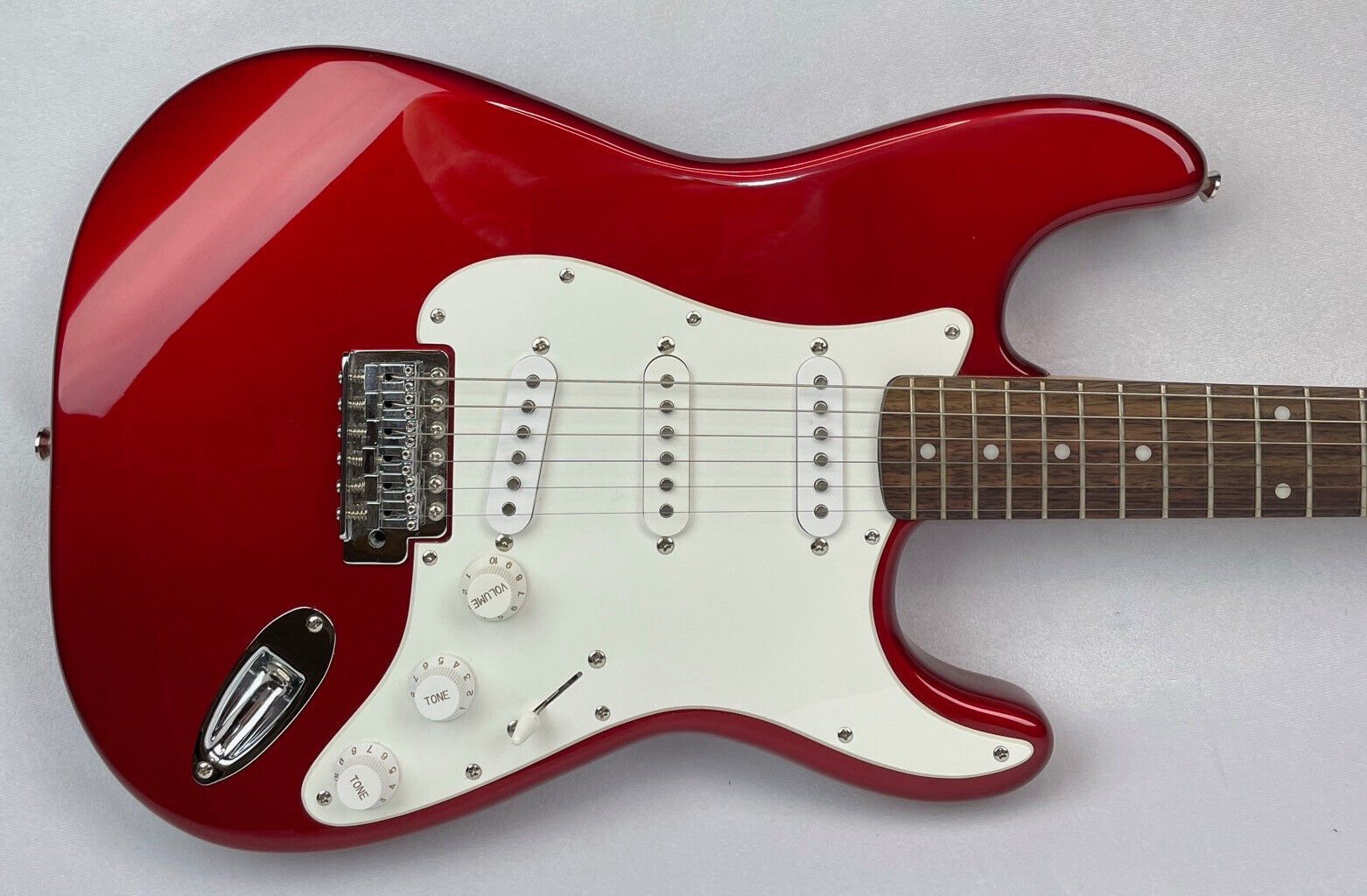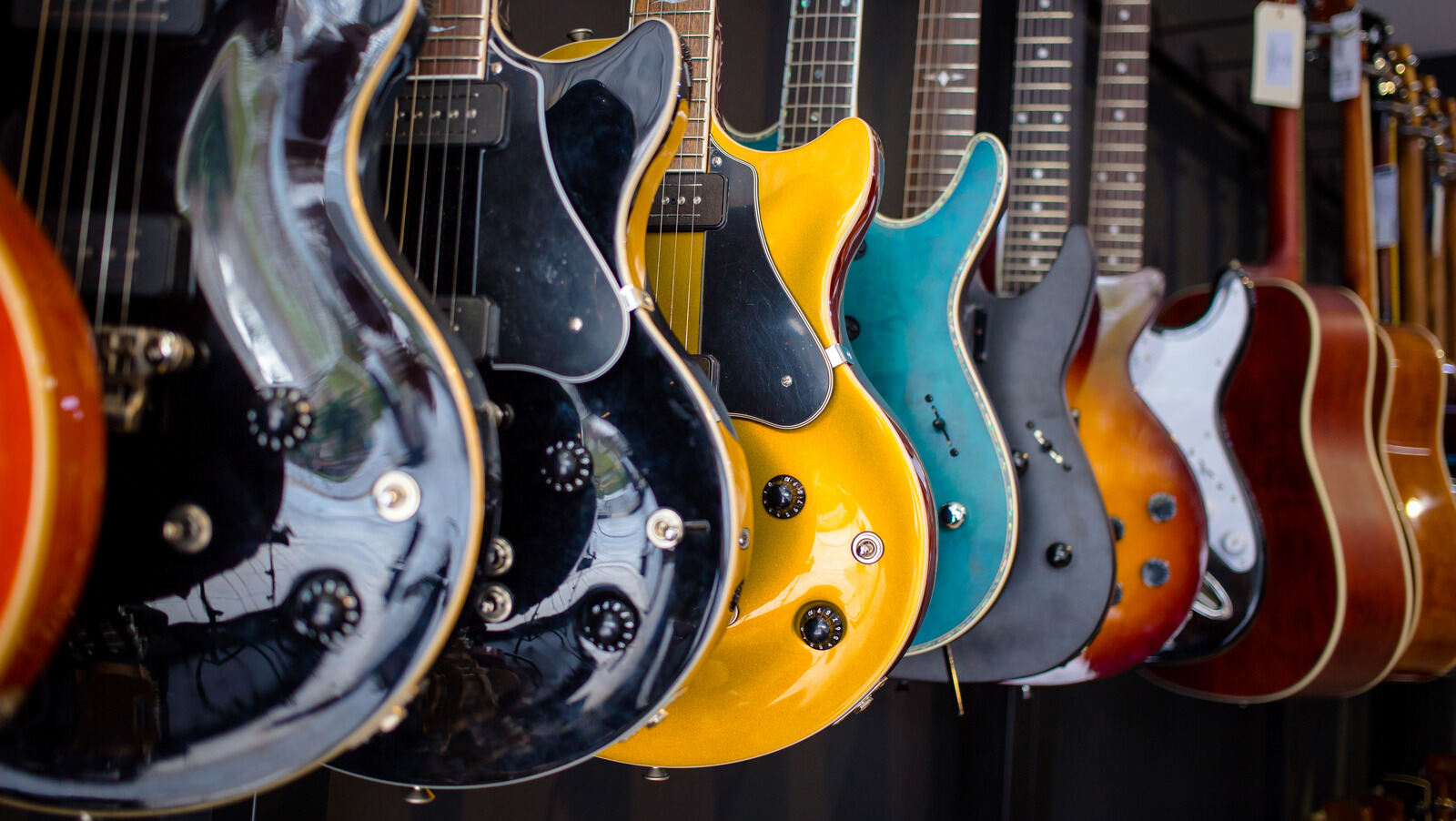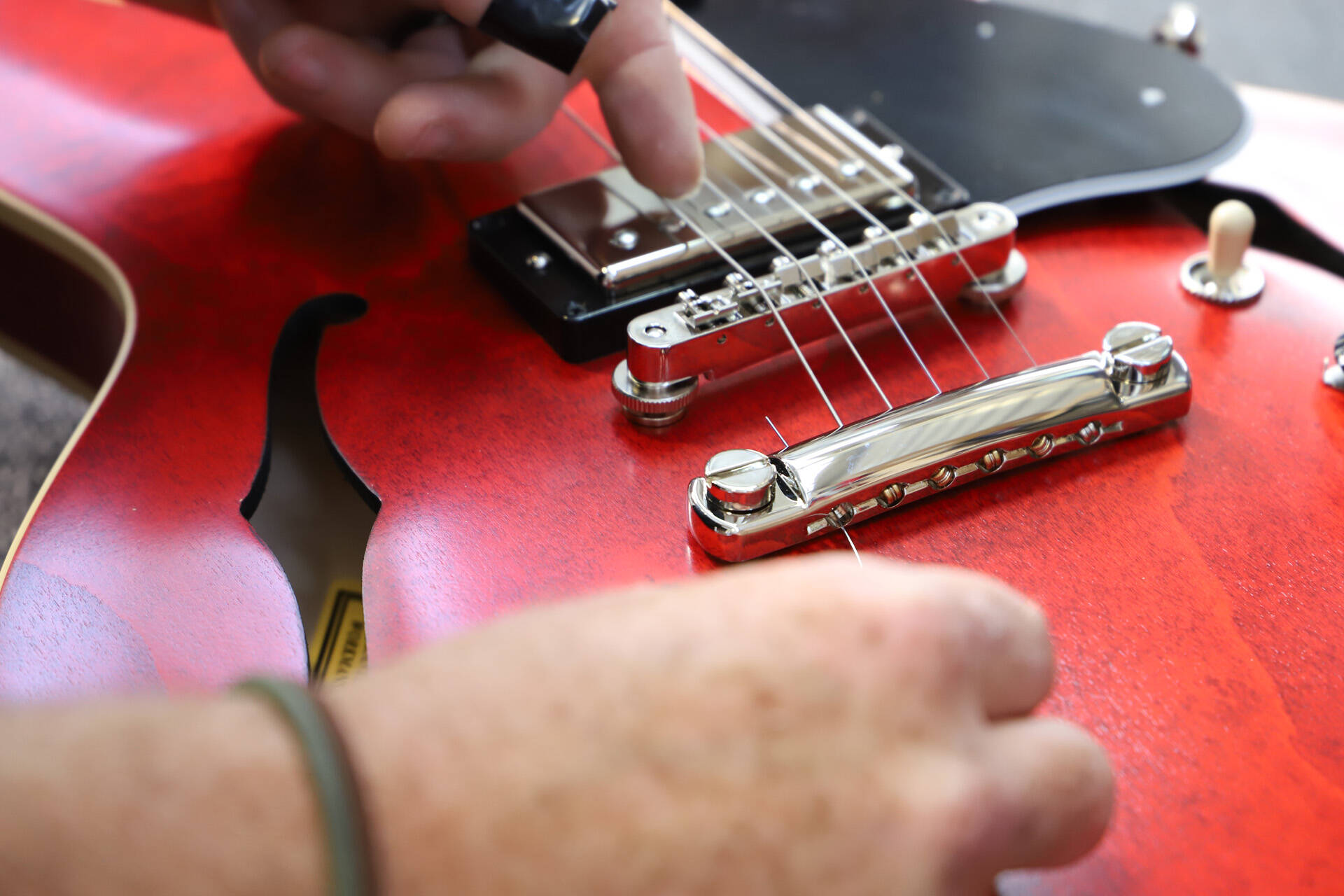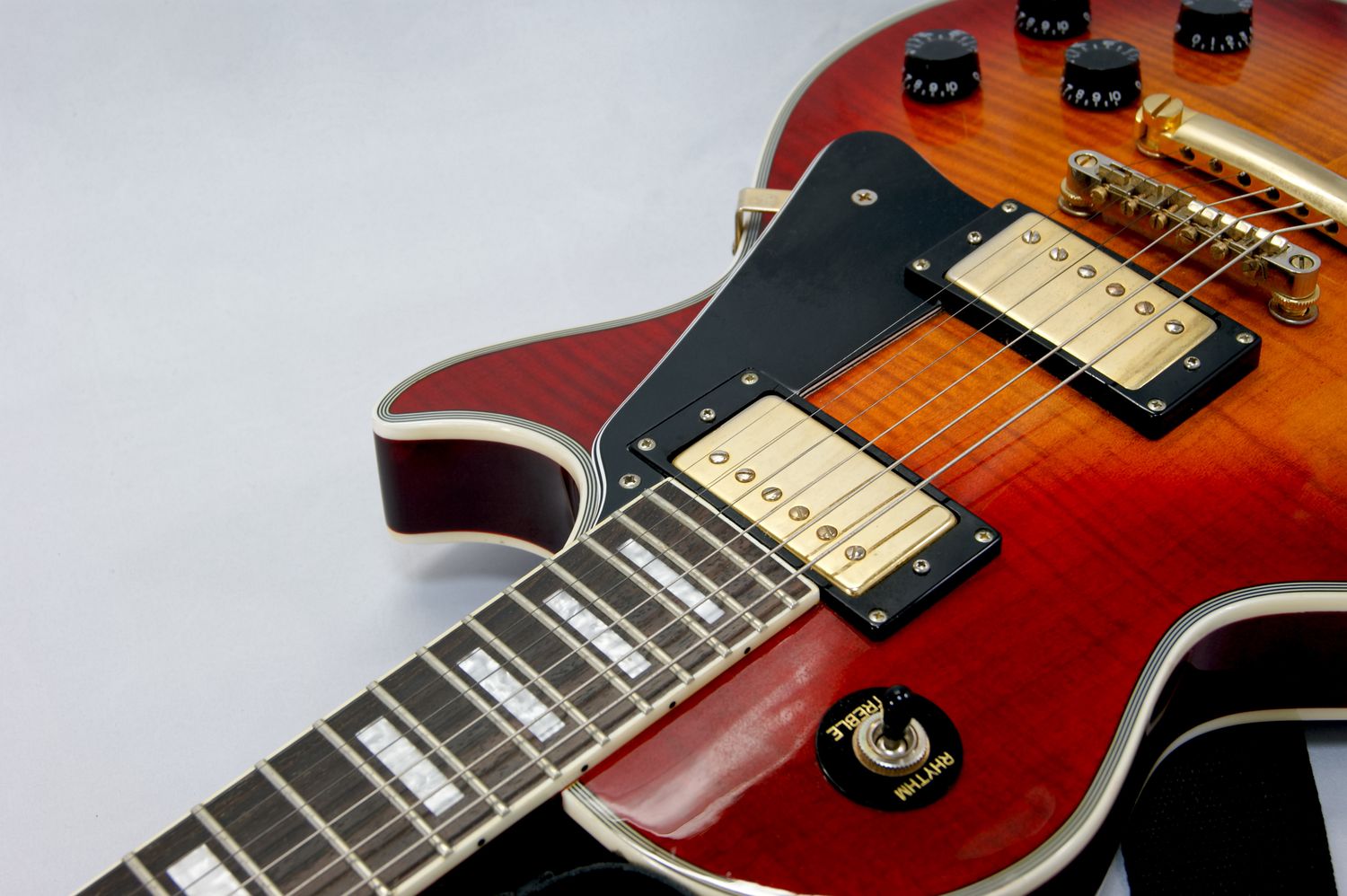Home>Instruments>Guitar>What Is An Electric Guitar


Guitar
What Is An Electric Guitar
Published: February 15, 2024
Learn all about electric guitars, from their history and construction to playing techniques and maintenance. Discover everything you need to know about the guitar.
(Many of the links in this article redirect to a specific reviewed product. Your purchase of these products through affiliate links helps to generate commission for AudioLover.com, at no extra cost. Learn more)
Table of Contents
Introduction
Electric guitars have played an integral role in shaping the landscape of modern music. These instruments have the power to captivate audiences with their electrifying sound and versatile capabilities. Whether it's the iconic riffs of rock legends or the soul-stirring melodies of blues virtuosos, electric guitars have left an indelible mark on the world of music.
The allure of electric guitars lies in their ability to produce a wide range of tones, from the warm and mellow to the raw and aggressive. Unlike acoustic guitars, which rely on the natural amplification of the hollow body, electric guitars use pickups and amplifiers to generate their sound. This innovative approach not only revolutionized the way music is created and performed but also opened doors to new genres and sonic possibilities.
At its core, an electric guitar is more than just a musical instrument; it's a conduit for self-expression and creativity. From the sleek curves of its body to the intricate details of its pickups, every element is designed to inspire and empower musicians. Whether you're a seasoned professional or a budding enthusiast, the world of electric guitars offers a thrilling journey of sonic exploration and artistic fulfillment.
In this comprehensive guide, we will delve into the captivating realm of electric guitars, exploring their history, components, types, functionality, and unique advantages. By unraveling the inner workings of these mesmerizing instruments, we aim to deepen your understanding and appreciation of electric guitars while igniting your passion for all things musical. So, let's embark on this melodic odyssey and discover the electrifying wonders of electric guitars.
History of Electric Guitars
The genesis of electric guitars can be traced back to the early 20th century when inventors and innovators sought ways to amplify the sound of traditional acoustic instruments. The quest for greater volume and tonal versatility led to the development of early electric guitar prototypes, laying the groundwork for a revolution in musical instrumentation.
One of the pioneering figures in this transformative journey was the legendary inventor and innovator, Adolph Rickenbacker. In the 1930s, Rickenbacker, along with George Beauchamp, created the “Frying Pan,” a groundbreaking electric guitar that featured a circular body and a magnetic pickup. This innovative design marked the birth of the modern electric guitar and set the stage for its meteoric rise in the music industry.
As the electrified sound of guitars began to permeate the airwaves, musicians embraced this newfound sonic territory, propelling the electric guitar to the forefront of popular music. The advent of genres like blues, jazz, and rock ‘n’ roll further propelled the electric guitar into the spotlight, solidifying its status as a cultural icon and a symbol of artistic rebellion.
Throughout the decades, electric guitars evolved in tandem with technological advancements, giving rise to iconic models such as the Fender Stratocaster, Gibson Les Paul, and countless others that became synonymous with the sonic identity of generations. The electrifying solos of Jimi Hendrix, the soul-stirring rhythms of B.B. King, and the thunderous chords of Jimmy Page all resonated through the electrified strings of these legendary instruments, shaping the sound of popular music and inspiring countless aspiring musicians.
Today, electric guitars continue to embody the spirit of innovation and artistic expression, pushing the boundaries of sound and style. From the sleek contours of modern designs to the timeless appeal of vintage classics, electric guitars remain at the forefront of musical creativity, serving as catalysts for sonic exploration and emotive storytelling.
The history of electric guitars is a testament to the enduring legacy of human ingenuity and the profound impact of musical instruments on culture and creativity. As we journey through the annals of time, we uncover the electrifying saga of electric guitars, a story woven with passion, innovation, and the timeless allure of musical enchantment.
Components of an Electric Guitar
Electric guitars are meticulously crafted instruments, comprised of several essential components that work in harmony to produce their distinctive sound and playability. Understanding these components is crucial for both aspiring musicians and seasoned players, as it provides insight into the inner workings of these mesmerizing instruments.
1. Body: The body of an electric guitar serves as its foundation, shaping its aesthetics and resonance. Whether it’s the classic curves of a Stratocaster or the bold contours of a Flying V, the body plays a pivotal role in defining the instrument’s visual appeal and tonal characteristics.
2. Neck: Connected to the body, the neck of an electric guitar houses the fretboard, frets, and headstock. It’s a crucial component that influences playability, with variations in neck profiles and scale lengths catering to different playing styles and preferences.
3. Pickups: Positioned beneath the strings, pickups are magnetic devices that capture string vibrations and convert them into electrical signals. They come in single-coil and humbucker configurations, each imparting its unique tonal qualities to the guitar’s sound.
4. Bridge: The bridge of an electric guitar anchors the strings and facilitates adjustments in intonation and string height. It plays a vital role in sustaining the strings’ vibrations and transmitting them to the guitar’s body.
5. Electronics: Electric guitars feature an array of electronic components, including volume and tone controls, pickup selectors, and output jacks. These elements allow players to sculpt their sound and explore a diverse range of tonal textures.
6. Tuners: Situated on the headstock, tuners enable players to adjust the tension and pitch of the guitar strings, ensuring accurate tuning for optimal sound quality.
7. Strings: The strings of an electric guitar are fundamental to its sonic character, with different materials and gauges influencing the instrument’s tonal richness and playability.
Understanding the interplay of these components is essential for musicians seeking to personalize their instrument’s sound and feel. Whether it’s experimenting with pickup configurations, adjusting bridge setups, or exploring tonal nuances through electronic controls, the components of an electric guitar offer a canvas for sonic exploration and artistic expression.
Types of Electric Guitars
Electric guitars encompass a diverse array of designs, each with its unique sonic characteristics and visual allure. From iconic classics to modern innovations, the world of electric guitars offers a rich tapestry of instrument types, catering to a wide spectrum of musical styles and player preferences.
1. Solid-Body Guitars: Renowned for their versatility and sustain, solid-body electric guitars feature a body constructed from a single solid piece of wood. This design minimizes feedback and emphasizes the guitar’s inherent tonal properties. Popular examples include the Fender Stratocaster and Gibson Les Paul, revered for their enduring impact on popular music.
2. Semi-Hollow Guitars: Combining elements of solid-body and hollow-body designs, semi-hollow electric guitars feature a center block that reduces feedback while retaining the resonance and warmth associated with hollow-body instruments. Models like the Gibson ES-335 exemplify the timeless appeal of semi-hollow guitars in genres ranging from jazz to blues and rock.
3. Hollow-Body Guitars: Characterized by their full, resonant sound and vintage aesthetic, hollow-body electric guitars feature a hollow chamber that enhances acoustic projection and tonal depth. These instruments are favored in jazz, blues, and rockabilly genres, with iconic models such as the Gretsch White Falcon and the Epiphone Casino epitomizing the allure of hollow-body guitars.
4. Baritone Guitars: With extended scale lengths and lower tunings, baritone electric guitars offer a deep, rich tonal palette that complements bass-heavy arrangements and experimental compositions. Their unique sonic footprint adds a compelling dimension to genres like metal, post-rock, and ambient music.
5. Multi-Scale Guitars: Innovatively designed to optimize string tension and intonation, multi-scale electric guitars feature varying scale lengths for each string, ensuring consistent playability and tonal clarity across the fretboard. These instruments are favored by modern metal and progressive rock guitarists seeking enhanced performance and sonic precision.
6. Travel and Mini Guitars: Compact in size yet big on portability, travel and mini electric guitars offer a convenient solution for musicians on the go. Whether it’s composing on the road or practicing in tight spaces, these diminutive instruments deliver a surprising amount of tone and playability.
Each type of electric guitar embodies a distinct sonic identity and aesthetic charm, catering to the diverse needs and creative aspirations of musicians across the globe. Whether it’s the timeless appeal of a vintage hollow-body or the cutting-edge innovation of a multi-scale instrument, the world of electric guitars continues to inspire and captivate players with its boundless variety and sonic allure.
How Electric Guitars Work
At the heart of an electric guitar’s captivating sound lies a sophisticated interplay of components and principles that transform string vibrations into electrifying musical expression. Understanding the inner workings of these mesmerizing instruments unveils a world of magnetic forces, electronic signals, and sonic resonance.
1. Pickups: Positioned beneath the guitar strings, pickups serve as the primary transducers, converting string vibrations into electrical signals. These magnetic devices consist of wire-wound coils wrapped around pole pieces, capturing the strings’ oscillations and inducing a corresponding electrical current.
2. Magnetic Fields: When the guitar strings vibrate within the magnetic field produced by the pickups, they generate a fluctuating magnetic flux. This interaction induces a small current in the pickup coils, mirroring the strings’ vibrations in the form of an electrical signal.
3. Signal Amplification: The electrical signals generated by the pickups are relatively weak and require amplification to drive speakers or headphones. This is achieved through the use of amplifiers, which boost the signal strength while allowing for tonal shaping and effects processing.
4. Tone Controls: Electric guitars feature tone controls, typically in the form of potentiometers, that enable players to adjust the frequency response of the signal. By manipulating bass, midrange, and treble frequencies, musicians can sculpt the tonal character of their instrument to suit a wide range of musical styles and sonic preferences.
5. Output: Once the electrical signal is amplified and shaped to the player’s liking, it is sent to the guitar’s output jack, where it can be routed to external audio equipment, such as amplifiers, audio interfaces, or recording devices.
6. Effects Processing: Electric guitars offer a myriad of effects processing options, including distortion, modulation, and time-based effects, which further expand the sonic possibilities available to players. These effects can be achieved through pedals, onboard digital processors, or software-based plugins, allowing for boundless creativity and sonic experimentation.
By unraveling the intricate mechanics of electric guitars, we gain a deeper appreciation for the marriage of art and technology that defines these remarkable instruments. From the magnetic alchemy of pickups to the sonic alchemy of effects processing, electric guitars continue to inspire and enthrall musicians with their boundless potential for sonic expression and emotive storytelling.
Advantages of Electric Guitars
Electric guitars offer a myriad of advantages that have solidified their status as indispensable tools for musicians across genres and generations. From their dynamic tonal range to their adaptability in live and studio settings, electric guitars continue to shape the sonic landscape and empower players with unparalleled expressive capabilities.
1. Tonal Versatility: Electric guitars boast a wide spectrum of tonal possibilities, thanks to the diverse configurations of pickups, tone controls, and effects processing. From crystalline cleans to searing overdriven tones, these instruments offer a rich palette of sonic textures that cater to a broad range of musical styles and artistic visions.
2. Amplification and Effects: The electrified nature of electric guitars allows for seamless amplification and integration of effects, enabling players to explore an expansive sonic territory. Whether it’s the raw power of distortion, the ethereal ambiance of reverb, or the expressive nuances of modulation, electric guitars provide a canvas for sonic exploration and experimentation.
3. Playability and Ergonomics: Electric guitars are often designed with player comfort and performance in mind, featuring sleek contours, balanced weight distribution, and ergonomic neck profiles. These attributes contribute to enhanced playability, making electric guitars well-suited for extended practice sessions and live performances.
4. Feedback Control: The solid-body construction of many electric guitars minimizes the risk of unwanted feedback, allowing for higher gain settings and amplified performance volumes without sacrificing tonal integrity. This feature is particularly advantageous in live settings, where controlled amplification is essential for a captivating and controlled performance.
5. Recording Flexibility: Electric guitars excel in studio environments, offering the ability to capture pristine, direct signals for precise tone shaping and post-production manipulation. This flexibility enables producers and engineers to sculpt the perfect guitar tones to complement a wide range of musical productions.
6. Adaptability to Various Genres: From the blistering solos of rock and metal to the soulful phrasings of blues and jazz, electric guitars seamlessly transition across diverse musical genres, embodying the sonic identities of each style with finesse and authenticity.
7. Performance Impact: The visual and sonic presence of electric guitars on stage enhances the overall performance impact, captivating audiences with their sleek designs, vibrant finishes, and electrifying soundscapes.
Electric guitars stand as a testament to the relentless pursuit of sonic innovation and artistic expression, offering a wealth of advantages that continue to inspire and empower musicians worldwide. As the sonic frontier expands and creative boundaries are pushed, electric guitars remain steadfast companions in the musical journey, enriching compositions and performances with their boundless potential and enduring allure.
Conclusion
Electric guitars stand as timeless icons of musical expression, embodying the convergence of artistry, technology, and cultural resonance. From their humble origins to their pervasive influence in contemporary music, these mesmerizing instruments have left an indelible mark on the sonic landscape, shaping the sound of generations and inspiring countless musicians to push the boundaries of creativity and innovation.
As we reflect on the captivating journey through the realm of electric guitars, we are reminded of their profound impact on musical genres, performance dynamics, and sonic exploration. The history of electric guitars unveils a narrative of ingenuity, passion, and artistic rebellion, with each chapter marked by the groundbreaking innovations and enduring legacies of legendary instrument makers and virtuoso players.
The components and types of electric guitars illustrate the meticulous craftsmanship and boundless variety that define these instruments, offering players an expansive canvas for sonic discovery and self-expression. Whether it’s the raw power of a solid-body guitar, the vintage charm of a hollow-body instrument, or the modern ingenuity of multi-scale designs, electric guitars continue to captivate players with their diverse tonal palettes and visual splendor.
Furthermore, the inner workings and advantages of electric guitars underscore their pivotal role in live performances, studio recordings, and musical compositions. From their tonal versatility and feedback control to their adaptability across genres and recording environments, electric guitars remain indispensable tools for musicians seeking to articulate their artistic visions with clarity and emotion.
As we conclude this melodic odyssey through the world of electric guitars, we are reminded of their enduring allure and transformative impact on the fabric of music. These instruments transcend mere craftsmanship; they are conduits for human emotion, storytelling, and sonic innovation. Whether in the hands of a seasoned virtuoso or a budding enthusiast, electric guitars continue to inspire, empower, and enchant, ensuring that their resonant legacy echoes through the annals of time, shaping the soundscapes of tomorrow and beyond.











